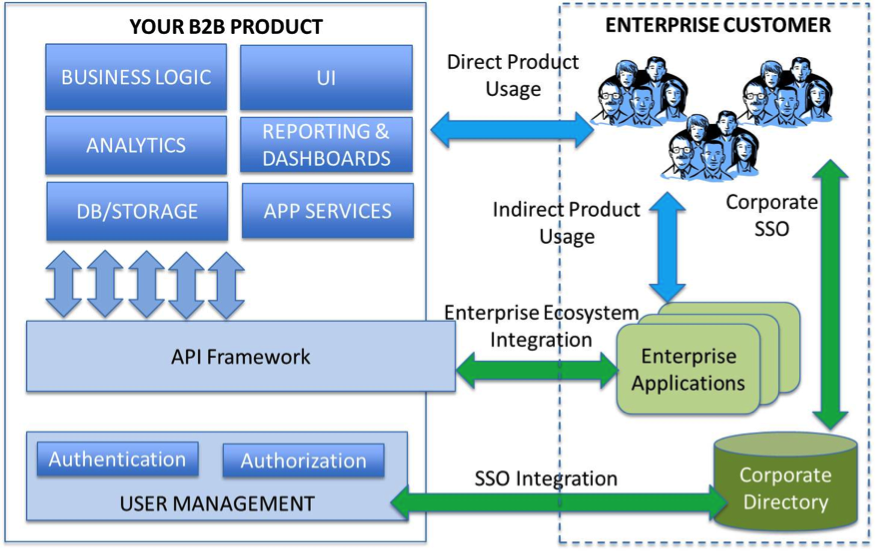B2B startups usually solve a unique problem that existing enterprise applications do not address. In some cases, they even create a new solution niche as they expand their customer base. As your B2B startup grows and acquires more customers and users, it is critical that the early adoption rate is not only sustained but multiplied. Integrating your new product with the enterprise ecosystem should be an important part of your adoption and growth strategy.
Effective enterprise integration stems from designing your B2B product to support an API framework. The framework itself can be built incrementally, but it’s important to have the API hooks in your product that allow external applications easy and secure access to data, product functionality and workflows. You can even have a few out-of-the box integrations that showcase this capability and provide your sales team with additional ammunition to convince that difficult prospect they have been chasing!
From a product adoption point of view, there are a number of advantages that B2B startups can derive from an enterprise integration strategy:
- Product access and recall: Enterprise users already employ a number of applications in their day-to-day working. Integrating your new product with these applications makes your product easily accessible and increases the number of user touch-points.
- Barrier to entry for competitors: It is harder for a competitor to replace your product at a customer where you already have multiple enterprise integrations in place. Your product is not just used by the customer, but well-entrenched in their ecosystem!
- Process integration: Integrating with one or more processes and making your product a part of enterprise workflows will help formalize usage and prevent it from being just another startup pilot deployment that ended up in a narrow enterprise silo.

What should you integrate with?
- Corporate Directory (SSO): Probably the first integration you should implement at any customer. I’d recommend making it practically mandatory for all enterprise customers you sign-up, and a default offering in your basic sales package. In this day of multiple online accounts, no user wants to remember another username/password combo for a new product. Integrating with your customers’ corporate directory and enabling single sign-on (SSO) will significantly ease the access, increase usage and speed-up adoption in an enterprise.
- Search Integration and Intranet Portals: Often the most frequented applications in an enterprise. Integrating with intranet portals are a great way to increase your visibility at a new customer, by leveraging these footfalls. If the customer has federated search implemented, search integration will allow users to discover your product when they are looking for something relevant.
- Domain Specific Applications: If you have an L&D product, you must have integrations with the customers’ existing LMS, assessment applications and the like. If you have a nifty HR tool, integrating with their employee management systems and ERP apps is a must.
- Critical Applications: Most enterprises have one or more critical applications that are essential for operations and are used by employees on a daily basis. Finding a way to integrate with these applications (even if they are outside your domain) can be a great way to make your product a part of the critical path of the organizations daily working.
Enterprise ecosystem integration is a key driver of B2B product adoption strategy. Executed well, it will pay rich dividends in terms of product usage, revenue and customer longevity.

